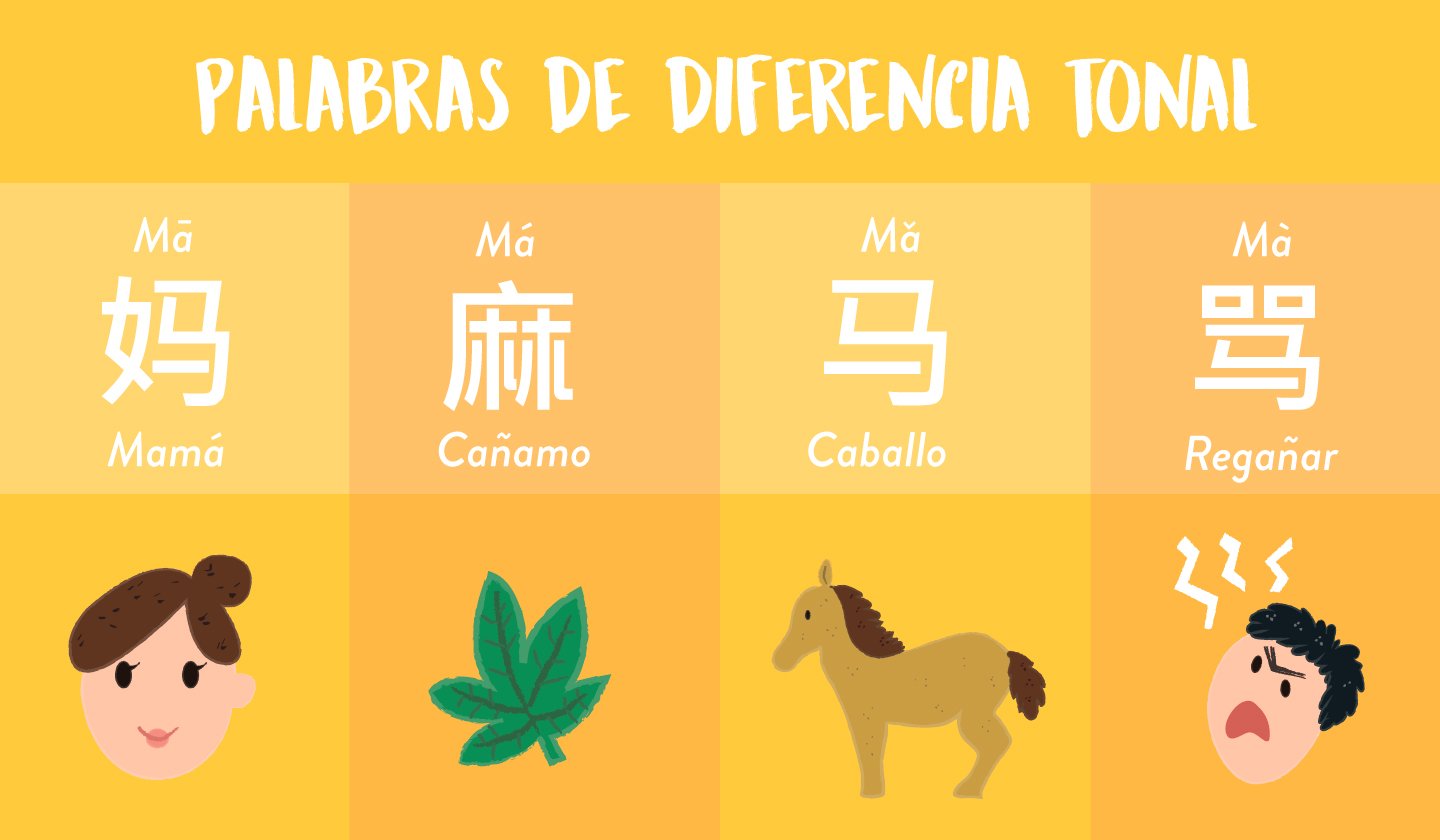
Learn Mandarin Chinese Lesson #1: Tones
The pronunciation and sounds of Mandarin They may seem impossible, but as soon as you begin to master the tones you will progress little by little, but it is clear that it will require effort and dedication on the part of those who want to learn this tonal language. In the reading we will guide you in an introductory way of learning the tones and some tips for their successful application.
Mandarin, a tonal language
The Mandarin language has a limited number of syllables, so it resorts to the use of pronunciation tones in words individually or together; For this reason, there are so many words that are pronounced the same but with a different tone.
Some examples of the same words but with a different tone:

Importance of tones.
It may seem intimidating, but Westerners are fully capable of using tones correctly, as English and Spanish also have tones, just not as explicitly as Mandarin.
The 5 tones
1 Tone: it's constantly loud and sustained, just like the sound of a train horn.
2 Tone: It is ascending, it is similar to when we say No? in question mode.
3 Tone: It descends and ascends, it is similar to an expression of astonishment.
4 Tone: it is dry and descending, similar to when we say! No! abruptly and quickly.
5 Tone: It has no variation and it is dry, it has no particular sound.

Advice
Memorizing and trying to reproduce the tones well separately is the first step, the basis for training a distinctive tone ear.
Children have the facility to learn languages because they listen and learn the phrases of the language as a set that they will then be able to mentally separate knowing each word that makes up the phrase, since they have learned it as a set together with its content to express and the part of linguistics. This should be the way we learn a language and mainly Mandarin.
It is recommended to listen to Mandarin phrases over and over again, memorize them and then try to separate the words one by one and identify the tones.
We have learned the different ways of understanding them from expressions and we have also analyzed their characteristics in terms of sound. You must understand that the tonal component of Mandarin is not a reason to be scared, but it requires effort, making the language daily is the key to developing a distinctive tone ear, it is mainly recommended to deal with natives and grow with learning companions.
Sources:
https://www.youtube.com/channel/UCD_emEdOZ6X5v4ZOHZ2iEkA
https://polyglotclub.com/help/language-learning-tips/chinese-tones/translate-spanish

